
This wonderful sentiment is echoed at Wonder Book/Books By the Foot in the following story:
Give me your tired … actually sell me…
It seems everyone loves to look at old books. Whenever we post images of books made before 1940 on our Wonder Book and Books by the Foot Instagram or Facebook we tend to get more “Likes” 👍 than with other posts of other types of books or LPs, or CDs, or DVDs, or blu-rays, or video games, or comics, or prints, or ephemera or toys, or retro sodas in glass bottles, or … whatever else we offer.
I have a great affinity for the old cloth and leather tomes myself. They are survivors. Albeit in some cases battered from decades of use, abuse, neglect, exposure and all the other things which cause books “distress.” However, since I’ve been selling books since 1980*—many of those years face to face with my customers in our brick and mortar stores—I’ve learned a thing or two. Like what sells and what doesn’t. What used to sell and no longer sells. What sells quickly for not much money and what sells for LOTS of money.
* Hard to believe I was only 7 years old when I opened that store… I’m lying…
This story is mostly about what doesn’t sell, but for contrast let me give you a little eye candy as well.
Here’s a battered old book:
Here’s another battered old book that’s not quite as old as the first:
Here’s another copy of the first book above but this one still has its dust wrapper.*
* Dust wrappers (or dust jackets) are the paper, often with illustrations and information about the book, used as a protective covering over the book. — ABAA
What’s the difference between these three copies of The Great Gatsby?
Maybe $100,000.00—$200,000.00.
Why?
Supply and demand.
The top book is a first American edition of The Great Gatsby. 1925. There’s a Scribner seal on the back of the title page. There are some other factors (a.k.a. “points”) like a couple errors and misspellings in the first that were corrected subsequently. So if you have a copy with all the “correct” errors, you’ve got a first edition! It’s got some wear and staining. The gilt lettering on the spine is quite rubbed. Still, that copy might bring a few thousand dollars at retail. Lacking the seal and any of those points, another copy of that book that may look identical to the first copy is worth far, far less. The second book is a 1940s Grosset & Dunlap reprint of the book. An aggressive bookseller might ask $50 for it in that condition. That bookseller might be looking at it collecting dust on the shelves for quite a while at that price. The bottom copy is also a first edition but its dust wrapper has survived in very good shape. The artwork is iconic. To me it just screams Roaring Twenties, excess and tragedy. Now every copy of the first edition of Gatsby that was sold in any store or by mail across the United States likely had a perfect dust jacket wrapped around it. Not very many those original jackets survive in any condition. They’re fragile. Most people saw them as just a wrapping—expendable. But in very good condition that piece of paper still present around a decent copy of the first edition Gatsby could sell for $100,000. A bright crisp jacket with no tears or wear around an unworn copy of the book could bring $200k—or more.
Why?
Supply and demand!
There are so few copies extant with the dust jacket. Also, there are many well-heeled collectors and institutions who feel that book is an important high point in 20th century literature. It is considered by many to be THE classic work of that age. Therefore, there are more interested buyers than there are copies on the market. Checking on this day I find no copies available on the internet with the original jacket at any price. Maybe $100-200,000 is just too low?
But this story is not about THAT kind of book.
When I used to work in the stores every day, I often did much of the buying of books from folks bringing them in to us. We’ve always bought all kinds of books. Hardcovers, softcovers, old, recent, all subjects too. Some of these sellers, often a sweet mature lady, would bring us very old books. They would often preface my inspection with the comment.
“These books are very old. Some were made a hundred years ago!”
That would get my defenses up. These sellers often felt that just because a book is old it was valuable.
In the early days my store’s shelves were filled with lovely 19th century and early 20th century hardcovers. As it turned out, many of these books were written by authors whose contemporary audience read and enjoyed their fiction but whom subsequent generations ignored. Their works didn’t stand the test of time. Have you read any Temple Bailey, Marie Corelli, Richard Harding Davis lately? Even copies of once perennial bestsellers like Zane Grey are far more common than the fewer and fewer who will pick up a reading copy or invest in a nice first edition.
So, I would lift their box of books up onto the “buying table” (a recycled antique oak pub table imported from Ireland.)
Lifting the lid would I see the sad jaded eyes of F. Scott Fitzgerald’s Daisy looking back at me? Never. Usually, I’d be peering down at a row of battered spines with forgotten titles and authors printed on them. Stewart Edward White, E.P. Roe, Winston Churchill (the American bestselling novelist)…and most often at the base of the spine were the words “Grosset & Dunlap” or “A. L. Burt”—reprint houses whose books are almost always valueless.
“I’m afraid these books aren’t in very good condition,” I’d sometimes opine.
“Well, you wouldn’t be either if you were a hundred years old,” was the innocent retort.
Sometimes they would come in with a little stack in their hands. “These books have been in my family for a hundred years!” Often each book would have a slip of paper extending from its top with the publishing date neatly written on it in pencil.
I’d sigh when this would happen. There was no easy way to tell the “heir” that Great Grandma’s copy of Alfred Lord Tennyson’s complete poems—with its hinges split—had no value to anyone. The “heir” would look at me askance and not without the suspicion that I was incompetent or crooked or both.
“You can’t make any offer on this lovely antique book?” they spoke with a dubious look in their eyes.
“No. I’m sorry. You can try an antique dealer. Or maybe see if an auctioneer feels it might bring something. You could also have a yard sale and see how they do there.”
I learned early on that most old books are just… “old books.”
How? Trial and error plus the School of Hard Knocks. If I bought and stocked them, most would sit forever on the bookshelves in Fiction, Mystery … even at very low prices. One thing a bookseller cannot afford is to have dead stock clogging up the bookcases. In the grand scheme of “book business” every volume that takes up space on a shelf is costing rent. The longer it stays on a shelf the more expensive its “cost” is to the bookseller. If one book sits dormant on a shelf for a couple years that is a bad thing. If hundreds do, it’s a tragedy. Eventually I learned to give up on many titles and authors because I found I’d buy the book, price it, stock it, wander by occasionally and notice the space it was taking up and eventually make the decision to cull it and put it outside for a dollar. If it didn’t sell there then, in the bad old days, there was NO ONE who would take it—even for nothin’. Charities didn’t want them. They have their own problems with books that don’t sell.
We tried putting a bunch up for auction. No bids. (The auctioneers were not amused by the way and in no uncertain terms told me not to try again.) Oh, and we had to haul them all back too.
There was no choice. We had to dump them. Back then no one would even accept the books for recycling. That hurt. Years went by. Our fledgling Books By the Foot program began to grow. We expanded—adding new styles we hoped Interior Designers would find attractive. Then the Internet happened, and we were able to offer books in bulk in a broad sweeping way nationally.
In the early days we got plenty of requests for old leather-bound books in excellent condition. There used to be a “furniture” dealer from North Carolina who would come up every few months and buy all my broken sets of Dickens, Balzac, Sir Walter Scott…as long as they were in great shape. No chipping to the top of the spine. No splitting at the hinges. He’d pay a few dollars apiece—which was good money back then.
But that still left us with no market for even slightly damaged leather-spined books as well as those unpopular old cloth bound books.
I began studying the terminology and marketing by and for Interior Design firms. Also, since I was often dealing with Designers on the phone or via email, I began to pick up on their lingo and catch phrases and euphemisms.
Then the inspiration hit me.
These books were not “old.” They were “Vintage”!
They were not battered or worn out. They were “Distressed”!
A market began to develop slowly for these old books. Around 2005 a large Texas bank chain got in touch with me. Their designer described the “look” they were trying to achieve. “Rustic.” “Sort of old but with a Ralph Lauren feel to it.”
“Hmm…kind of like the Old West in Texas, maybe?” I thought.
I staged some Vintage books and sent her images.
“That’s it! We need 330 linear feet of them. I want a few feet for each branch.”
Yikes!!
That was a LOT of books… AND a lot of money. Did we have 3300+/- vintage cloth books? Nope.
Time to get creative again. I began reaching out to fellow bookseller friends.
“Hey, I’ll buy all your pre-1940 junk cloth and leather…”
Some were suspicious. Maybe they thought I was looking to get treasures for pennies. I’d send pictures of what I was looking for. I assured them I would take EVERYTHING. Incomplete sets, “Distressed,” “Highly Distressed”…
Somehow we took care of Texas. I actually began actively searching for unwanted old books.
When we moved into our new warehouse in 2014, we designated most of a large room to “Vintage”—it used to be the USPS cafeteria. This building was the regional distribution center until the post Office pulled out in 2011. We only needed a small portion of it for our own employee break room so we lined the perimeter with bookcases and erected rows across the back third of the room. There was a large enclosed patio behind it. A wall ran down the middle of it bisecting it into two spaces—one for smokers; one non-smoking. It had a roof and high walls made from decorative cinder blocks stacked on their edges to let air and light in. However, security was a big concern for the post office and although workers on their breaks may have had an impression they were sort of outdoors, they could not exit these walls and actually get out to the grassy field just beyond. The sign on the heavy metal door read: “Emergency Exit Only. Alarm Will Sound.” It was too weird for us. We covered the porous walls with steel paneling and put picnic benches outside. Now we had two more rooms to fill with shelves for old unwanted books.
And fill them we did. A combination of being too successful in recruiting old unwanted books from fellow booksellers and a slowdown down in their sale to designers led to a period of massive overstock. We found we had way too many of the bad old things.
Also, a big part of being too successful in attracting old books of no value came from other sources. Charities. Most of the big corporate charities have become pretty savvy about maximizing the value of the things donated to them. In an earlier book story (“Book Rescue Goes Viral” on September 08, 2017), I related how I came to acquire truckloads of children books rescued from being pulped by paying the charities (who were vastly overstocked with them.) I offered them more than they would get by selling them to the pulp mills—I was now buying books by the ton. That got me thinking—why couldn’t we pay them not to destroy the old stuff they come across?
“You want what? You want to buy the old stuff we pulp?”
People are often confused when you offer to pay for their “trash.” But by sending them pictures and reworking my pitch several different ways I finally convinced them to try.
That too became TOO successful. Soon we had 45-50 Gaylords of “Old Books,” and no one to go through them and no place to shelve them.
“I need you to stop building any more of these loads. I will buy whatever you already have for me…”
That was a sad time. I imagined all the books that were now going to the pulpers instead of us. We actually would find some pretty great thing things amongst the old “junk.” This old Marx Brothers book turned out to be signed by Harpo. And he executed a little self-portrait of himself playing the harp!
Then the market rebounded. The Vintage lines began selling again. I asked the charities to begin building the “Old Book” Gaylords again.
I’ve begun reaching out to the colleagues whose flow of old books to me I’d turned away.
“I’m buying again!”
“Hurray!”
Those shelves look pretty thin right now. A month or two ago they were stuffed. We even had stacks spilling out onto the floor like this:
But we are working on reloading those bookcases. Ebb and flow.
I often feel bitter sweet when I walk through those rooms and shelving sections. I try not to look. Something in my mind has always given books “life.” I sort of anthropomorphize them. I see so many as if they were puppies in a kennel looking hopefully at you as you pass by; hoping that it would be they that you chose to take home. (I guess that would be caninepomorphize?) This is especially true for the old books. I find these well-made, thoughtfully designed works are often beautiful evocative objects.
The images above are sample stagings from our booksbythefoot.com site.
The fact they have stood the tests of time and have arrived after often passing through many, many hands and many generations adds to their mystique.
So when I pass by the shelves in these rooms, I try not to look too closely at the “puppies” on the shelves. I find when I do, I can rarely resist pulling one or two or a dozen that I feel may be worthy of giving a chance for individual ownership in one of the stores or online.
Does it bother me that at this point they will be relegated to a purely decorative role? Kind of, but there really is no other choice. By definition they will be out on display in some hotel or restaurant or corporate venue. Or perhaps they will be in someone’s home. At least they will have a chance to be seen and handled and just maybe some will be picked up and read. I recall many, many years ago there were a couple restaurants in the region using old books as decor. I would closely inspect them for resale or my personal collection and occasionally ask the confused waitress if I could buy a couple.
Then occasionally we have re-rescued rescue books.
For example, a friend, Michael Dirda, asks to visit here a few times a year. He is a Pulitzer Prize winning journalist, author, book reviewer for The Washington Post and others … and an all around brilliant and encyclopedic scholar of the “book.” (Google him and envy his talents as I do.) He has an affinity for old obscure forgotten authors. I believe he is working on a massive work about late 19th and early 20th century books. He is also afflicted with the “Gentle Madness” for book acquisition like many others, including yours truly. When he visits, he will spend most of the day browsing the vintage book rooms and shelves. He will emerge in the afternoon with one of our 6 shelf 4 wheel metal book carts one-third to half full of books he wants. He makes some surprising finds that have somehow slipped through our nets, but mostly he finds books by authors whose books I’ve handled and have never had much success selling in the stores or online, but he knows something about them I don’t. Some literary connection or importance too obscure for a general bookseller. I tally the number of books and multiply by a very low monetary amount—less than I’d get selling them “By the Foot.” We are both happy. I feel in some ways I may have advanced scholarship a bit, but mostly I’m pleased the books he is taking will re-enter the world of the “living”—the world of books that people own to read and love and care for. Afterward we will head out and have a bite and a beer… and a conversation about books and book people.
This is what we do with every book that comes in—old and not so old. Some are easy to place in the stores or on the Internet (along with the 2 million other books we offer at wonderbook.com.) Others we have to be a little more creative with like the “unwanted” vintage cloth and leather. Take a minute to visit our booksbythefoot.com site. Click the “Styles” button and scroll through our “vintage” selection. You’ll see staged offerings like these:
Oh, and have we ever found a copy of “that” book?
Yep! Unfortunately, no dust jacket.


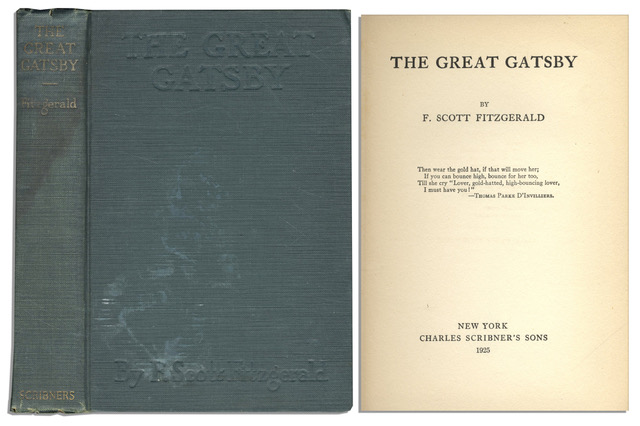
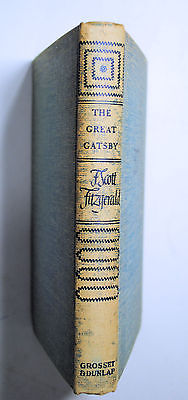
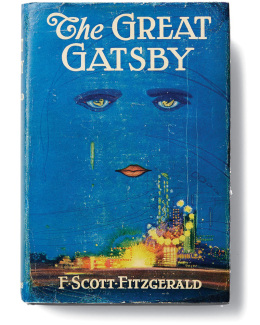
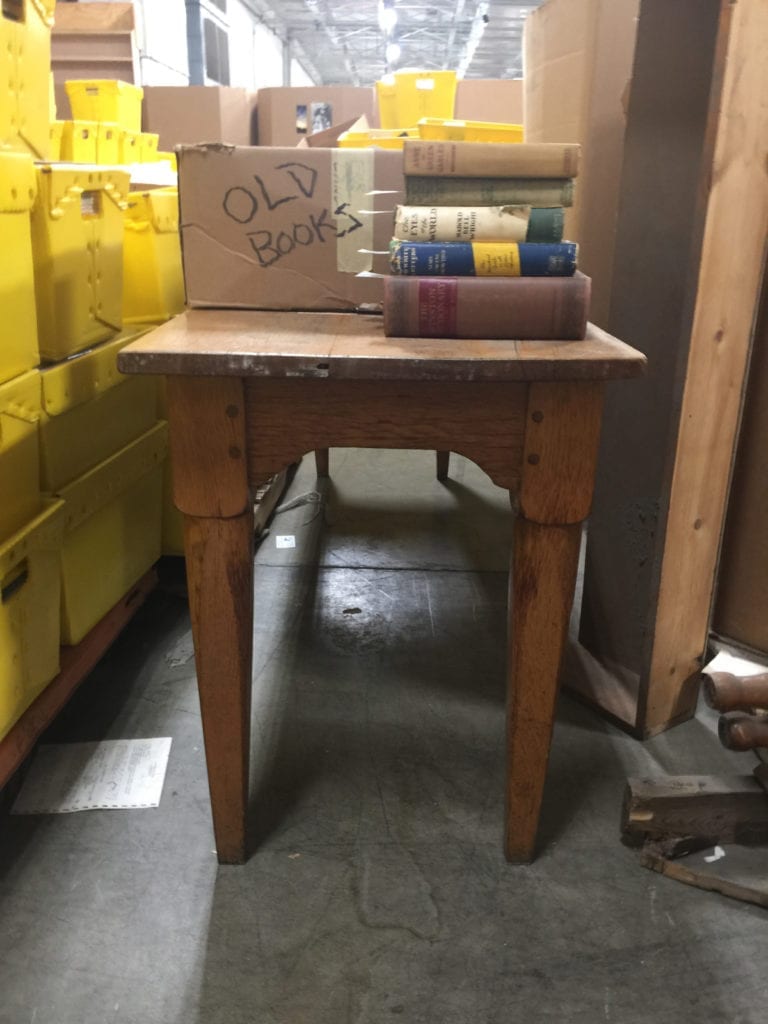

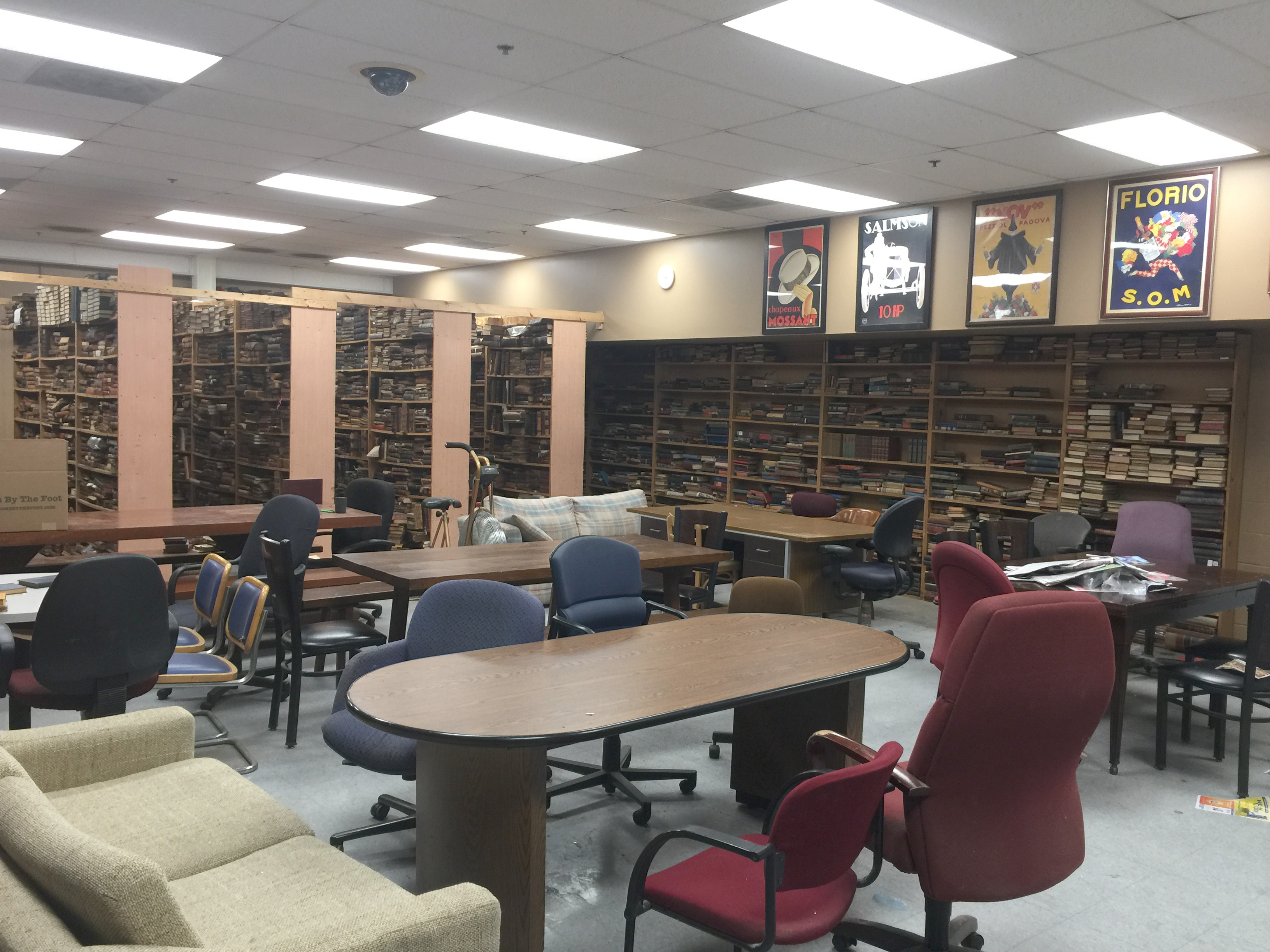
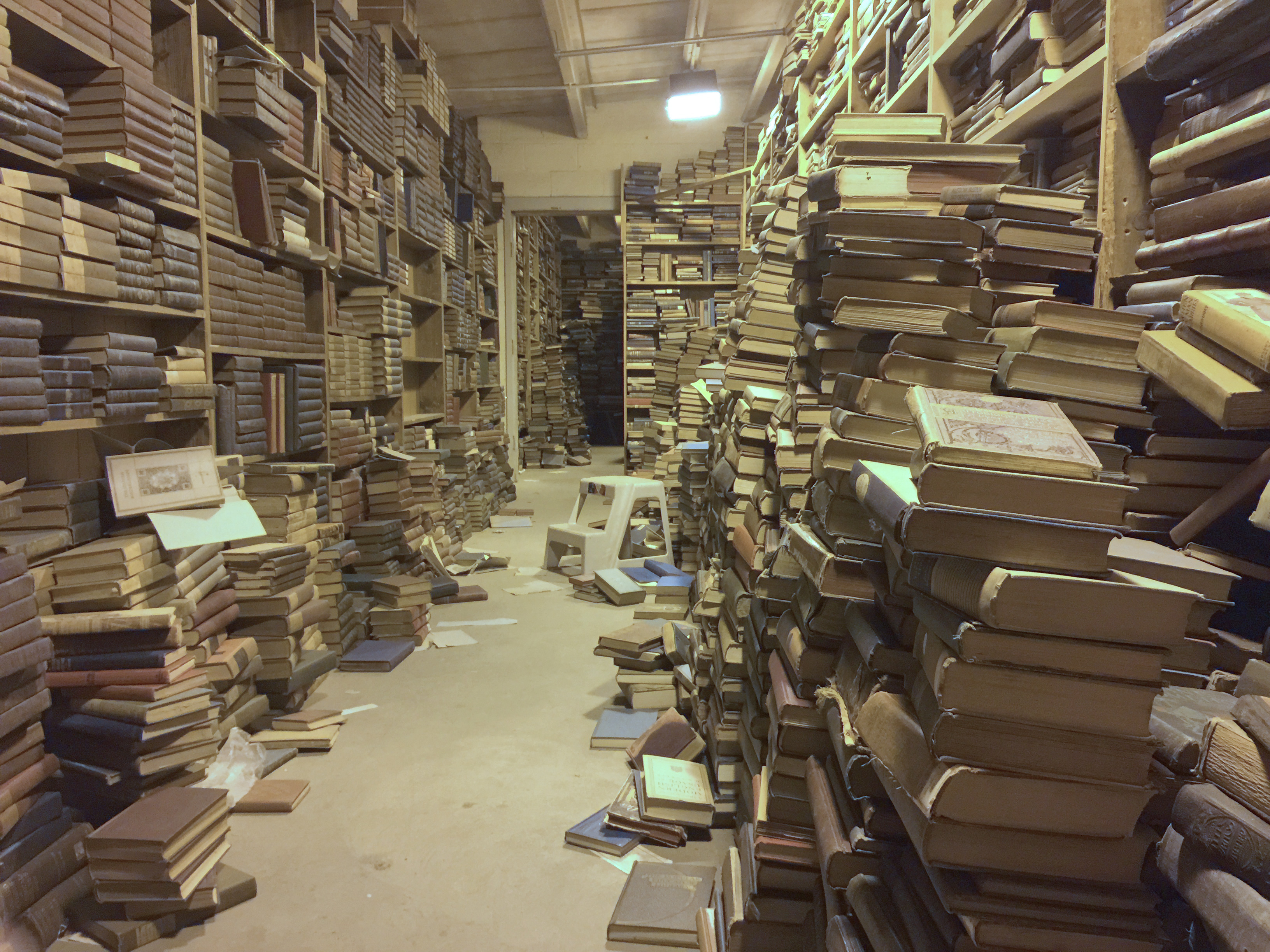

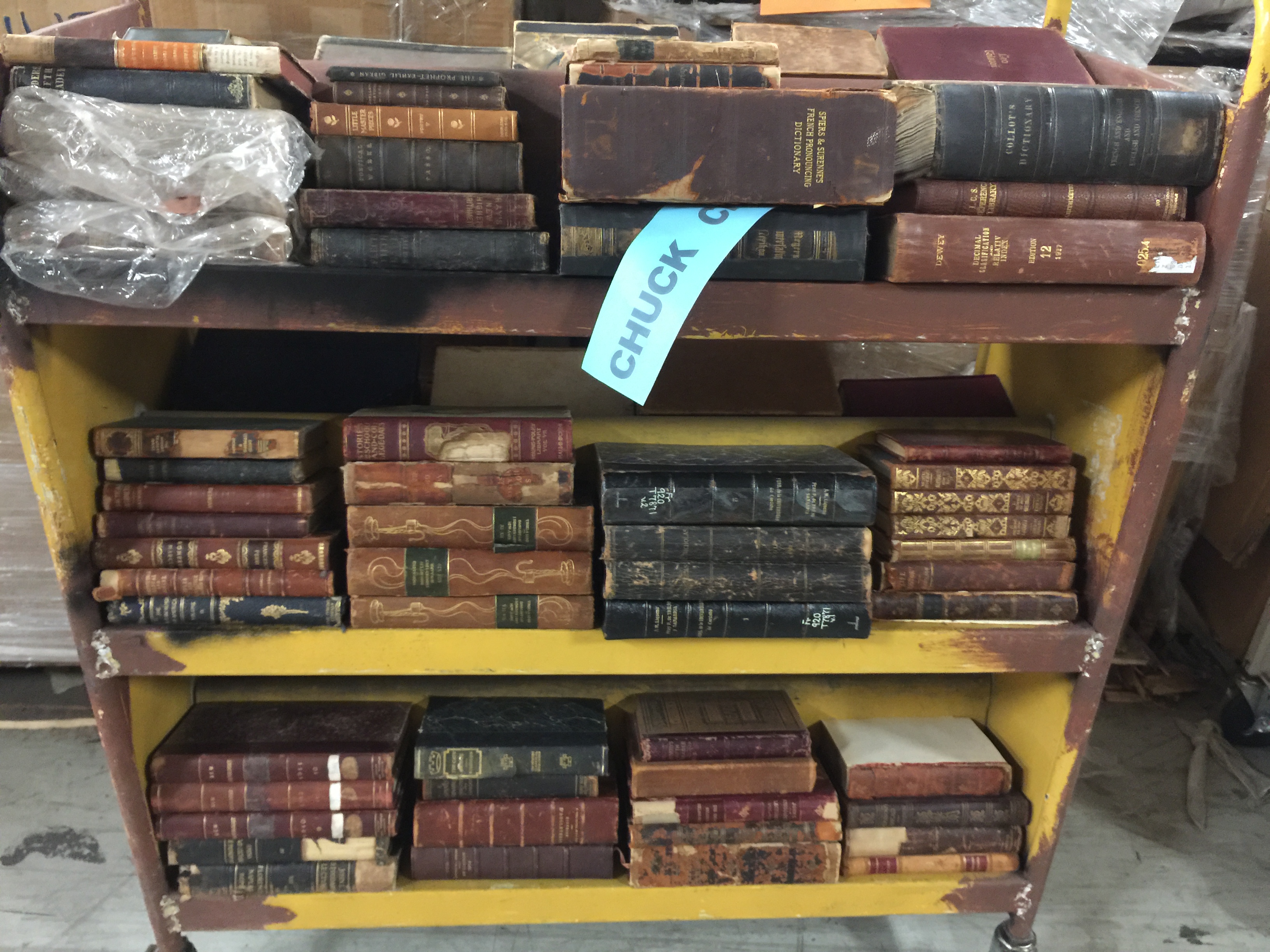
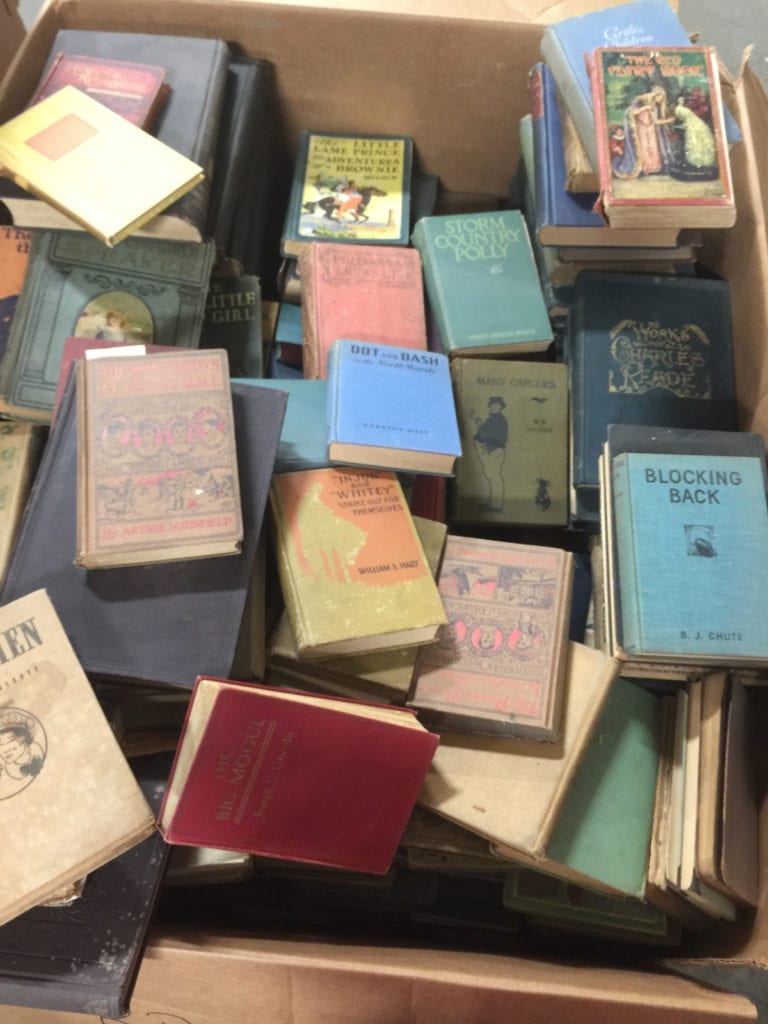
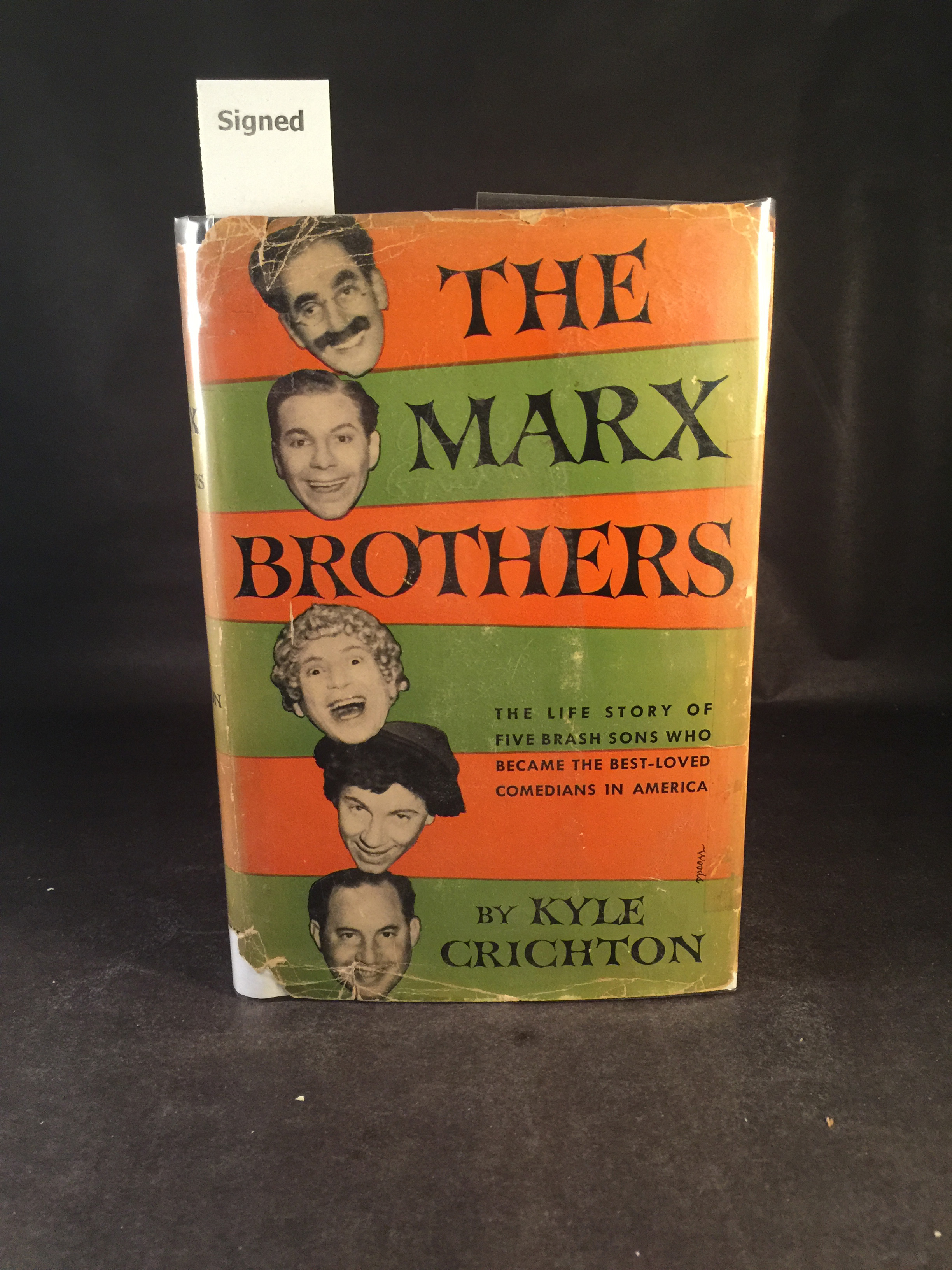

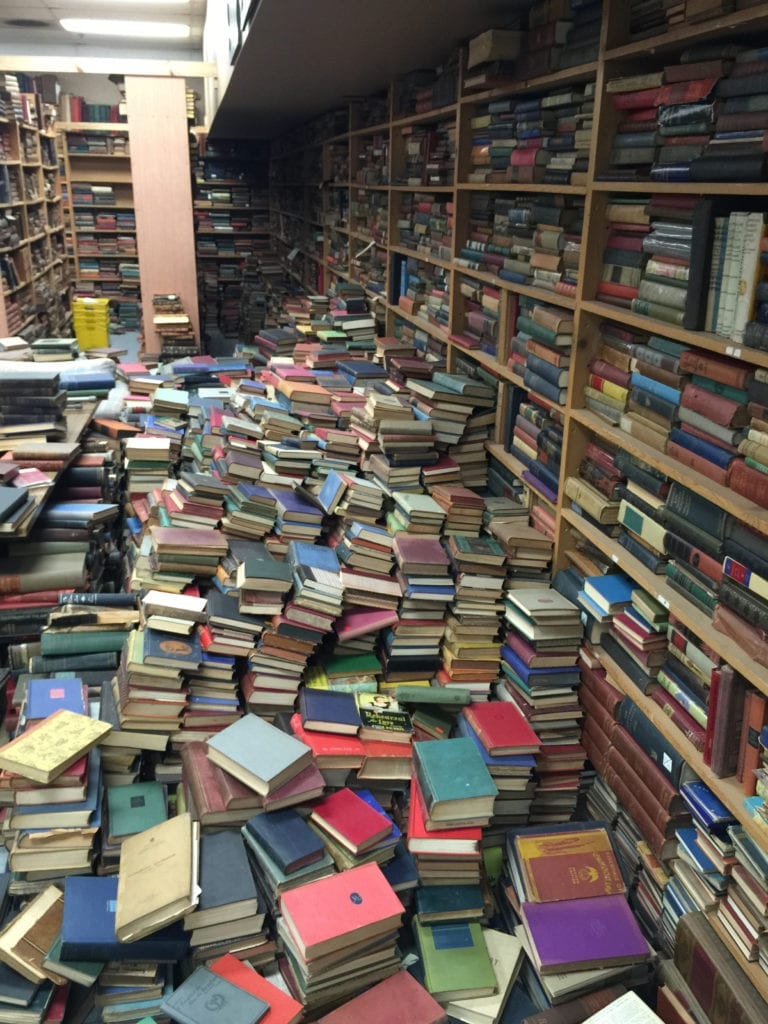

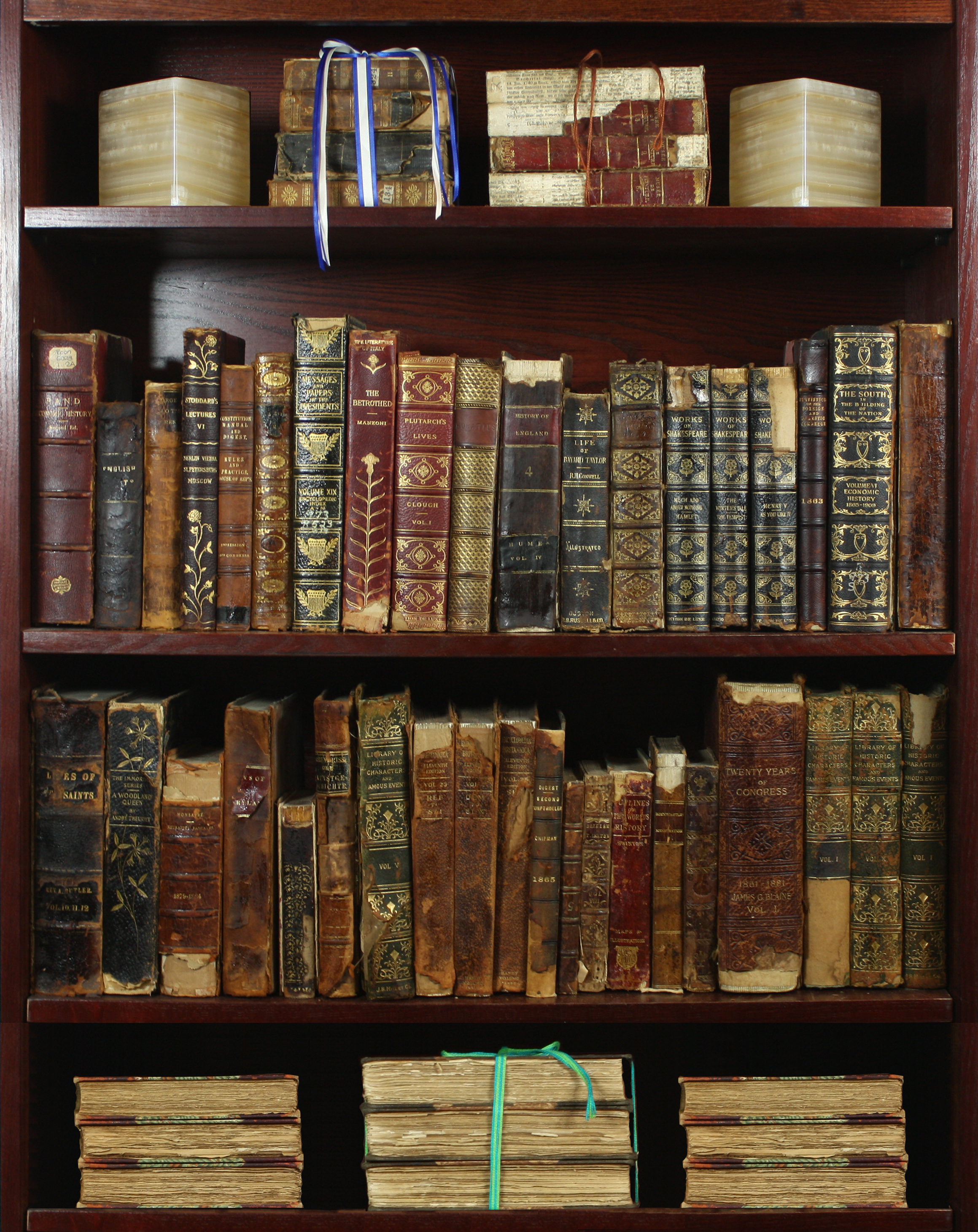

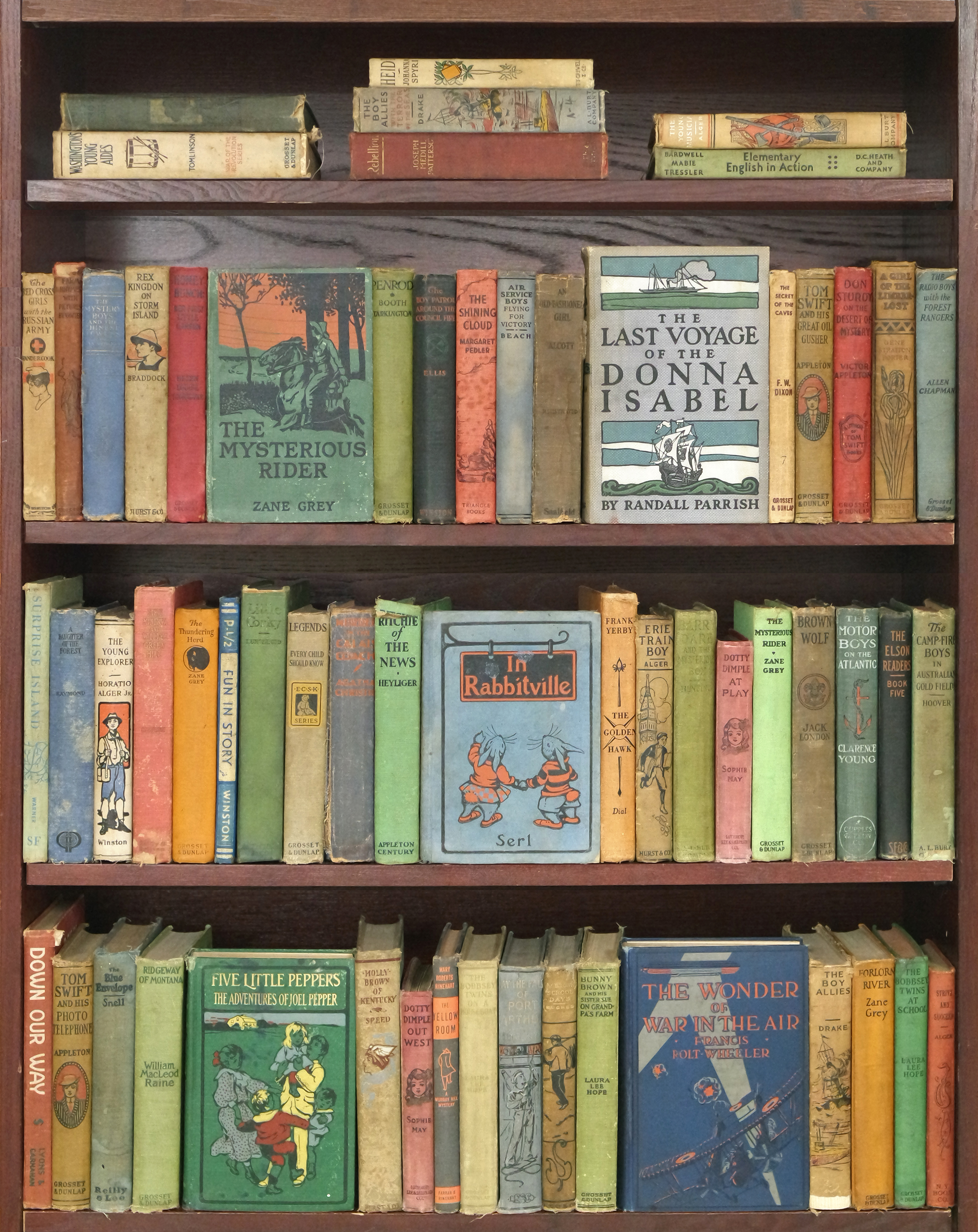


Anyone who lives or works or wishes he/she lived or worked in the world of antiquarian books,
should be reading this blog every week. It’s informative, entertaining, and based on experience.
Thank you, Bob!
I’m settling my mother’s estate & the lical bookstore that used to buy old books has gone out of business, so I’m looking for a place to take them. Are you still looking for old,used books?
Thank you.
Thanks Gail!
What town are the books in?
Email is best
Chuck
OK Chuck I have some books for you.
I’m just seeing this!
Sorry I didn’t respond sooner!
Thanks Ezra.
Email if you wish
Chuck
Very interested story. How do i get a appointment for you guys to look at some vintage books? I dont know anything about old books. Im glad you found a way for old books to be saved and have a new purpose.
Hi Jennifer
I am so sorry.
I just saw this!
I usually get notifications of comments
Please email about the books if you wish
chuck@wonderbk.com
Thanks for reading!
Chuck